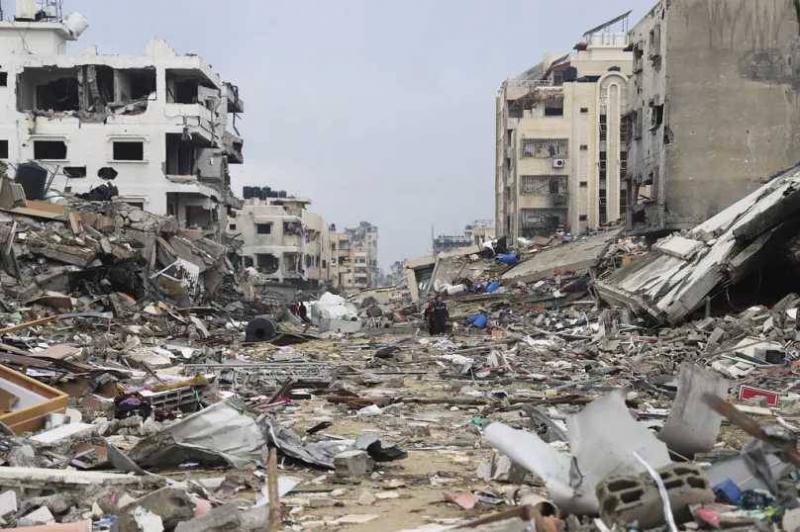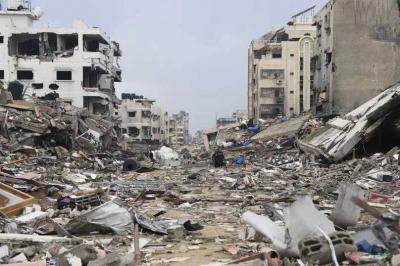A senior official revealed to the Kuwaiti newspaper "Al-Jarida" that Israeli Prime Minister Benjamin Netanyahu has requested support from opposition leader Yair Lapid and centrist politician Benny Gantz to finalize a prisoner exchange deal with Hamas, which includes a ceasefire in the Gaza Strip. The official noted that amid the threat from the hardline ministers Itamar Ben Gvir and Betzalel Smotrich to withdraw from the coalition government if an agreement is reached without eradicating Hamas, Netanyahu's resort to the opposition indicates that the deal is nearing its final stages.
According to information available in Jerusalem, the first phase of the agreement will last about 16 days during which Palestinians will release 32 living detainees, including children, women, men, and sick individuals, in exchange for Israel's release of 350 prisoners from its jails, among whom are children, women, and elderly individuals whose identities will be specified. This phase will also allow humanitarian aid into the Gaza Strip.
In the second phase, Palestinians will release Israeli soldiers, both male and female, along with the bodies of soldiers killed in the attacks of October 7, 2023, and earlier, as well as the hostages Abraham Mengistu and Hisham al-Sayed, in exchange for 2,000 Palestinian prisoners chosen by Tel Aviv. This will all take place while the Israeli army repositions itself in the northern sector.
In the third phase, Palestinians will return all bodies in exchange for Palestinian prisoners, including ten senior leaders whose names have not yet been specified. Israel is expected to withdraw from the Philadelphia-Salah al-Din axis and the Rafah crossing, alongside a redeployment in Gaza, paving the way for the return of Palestinian forces under international and Arab auspices and starting the reconstruction of the devastated sector.
The source stated that regarding Hamas's fate, an agreement has been reached between the movement, Qatar, and Egypt to postpone discussions about the future of governance in Gaza, with the understanding that Hamas cannot return to power as it was before October 7. One of the proposed options is its engagement with the Palestine Liberation Organization, paving the way for its future participation in governing the Palestinian territories in both the Gaza Strip and the West Bank.
"Al-Jarida" learned that Netanyahu sent a special thank you message, along with Mossad Director David Barnea, to Qatar's Emir Sheikh Tamim bin Hamad Al Thani and his Prime Minister, Minister of Foreign Affairs Sheikh Mohammed bin Abdulrahman, appreciating their role in reaching an acceptable formula for all parties. Barnea visited Qatar last week and is scheduled for a similar visit to Cairo, ahead of renewed official discussions in Doha to finalize the anticipated deal.
In Beirut, information indicates that Washington has contacted Tehran regarding applying pressure on Hamas, specifically on its leader in Gaza, Yahya Sinwar, to achieve a truce. Following Iranian-American and American-Qatari communications, Hamas has accepted President Joe Biden's modified plan regarding the three phases, with reports indicating that multiple discussions took place between the movement and its allies in the resistance axis led by Iran, not only to discuss this deal but also to prepare a comprehensive political paper about the day after and the future of Gaza.
All these files were on the agenda during a meeting held between a Hamas delegation led by leader Khalil al-Hayya and Hezbollah Secretary-General Hassan Nasrallah. Sources close to both parties affirm that what is happening is a form of coordination and consultation, with no one dictating to the movement what to decide. However, there is an effort to learn from the experiences of other forces, particularly Hezbollah, which went through similar situations, especially militarily after the 2006 war, and how the party dealt with the international community and UN Resolution 1701.
Information points out that the paper Hamas is working on will be comprehensive, including the movement's vision for reconstruction and how to accomplish it, as well as which countries will be involved. Additionally, it addresses the military structure of the movement, which, according to this information, will be retained without provoking others, akin to the model adopted by Hezbollah after the 2006 war by concealing armed appearances south of the Litani River while maintaining its reinforcements and readiness.
Furthermore, the discussion will cover the political future of the Gaza Strip, emphasizing political actions and involvement through relevant service and aid organizations. The most crucial discussion will be on how to coordinate with international forces and Arab countries, and how to manage the situation in Gaza, determining which forces Hamas will agree upon to monitor the implementation and stabilization of the agreement, as no party considered provocative by the movement can accomplish this task.




